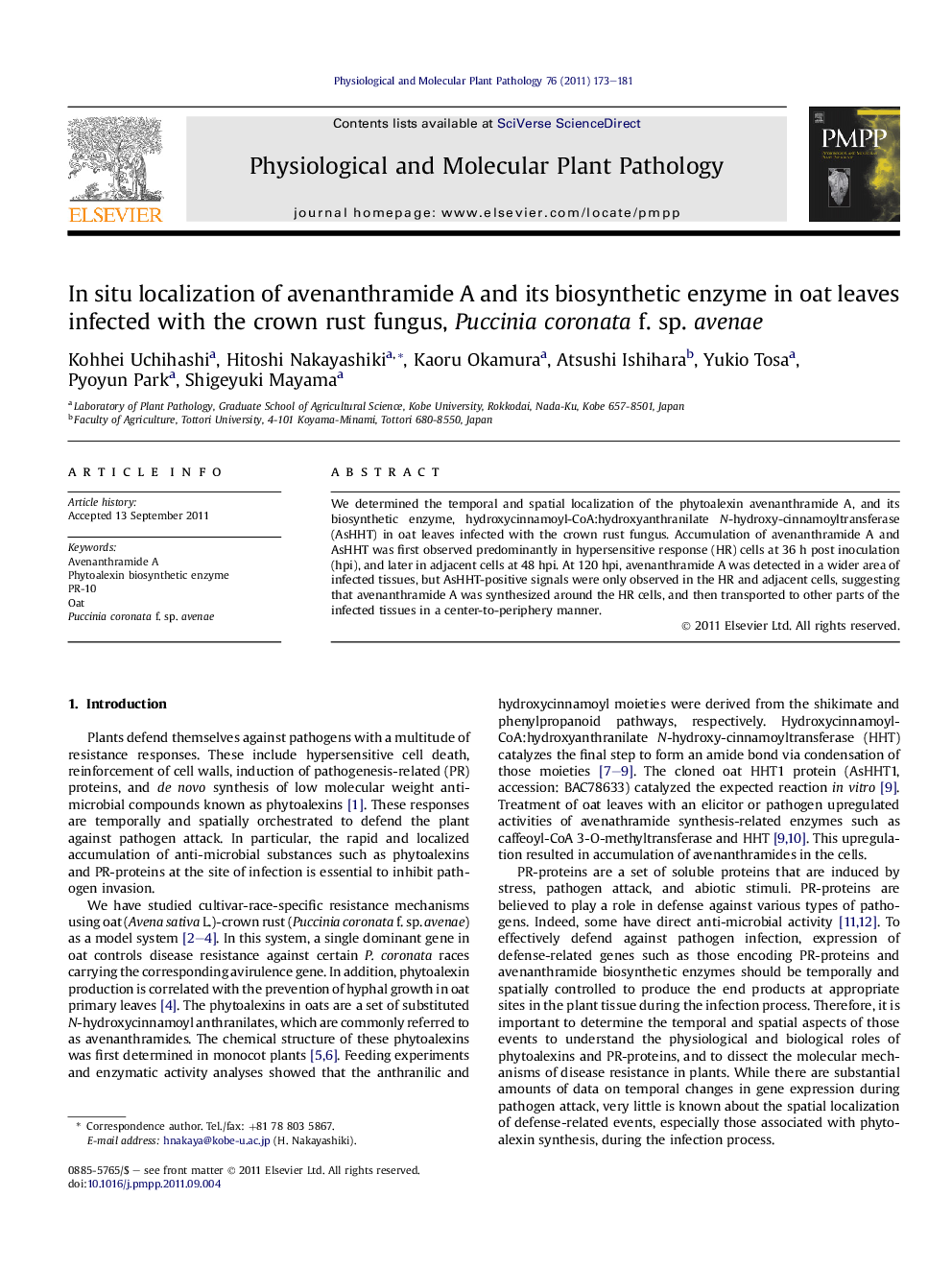| کد مقاله | کد نشریه | سال انتشار | مقاله انگلیسی | نسخه تمام متن |
|---|---|---|---|---|
| 2836530 | 1570862 | 2011 | 9 صفحه PDF | دانلود رایگان |

We determined the temporal and spatial localization of the phytoalexin avenanthramide A, and its biosynthetic enzyme, hydroxycinnamoyl-CoA:hydroxyanthranilate N-hydroxy-cinnamoyltransferase (AsHHT) in oat leaves infected with the crown rust fungus. Accumulation of avenanthramide A and AsHHT was first observed predominantly in hypersensitive response (HR) cells at 36 h post inoculation (hpi), and later in adjacent cells at 48 hpi. At 120 hpi, avenanthramide A was detected in a wider area of infected tissues, but AsHHT-positive signals were only observed in the HR and adjacent cells, suggesting that avenanthramide A was synthesized around the HR cells, and then transported to other parts of the infected tissues in a center-to-periphery manner.
Figure optionsDownload as PowerPoint slideHighlights
► The phytoalexin, avenanthramide A was first synthesized at the sites of infection.
► Avenanthramide A was then transported to other parts in the infected tissues.
► PR-10 expression was also induced upon fungal infection at the very early stage.
► Further upregulation of PR-10 occurred only in the incompatible interaction.
Journal: Physiological and Molecular Plant Pathology - Volume 76, Issues 3–4, December 2011, Pages 173–181